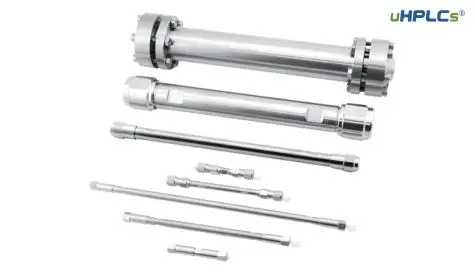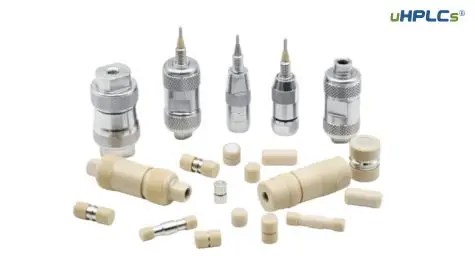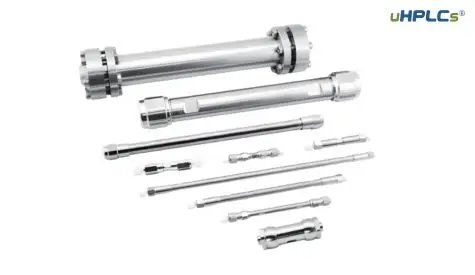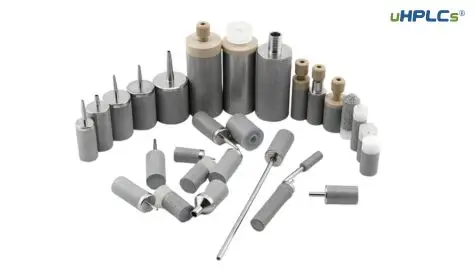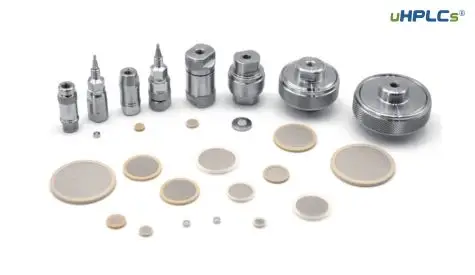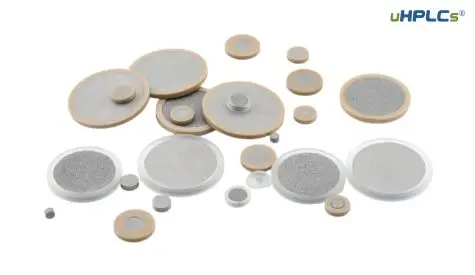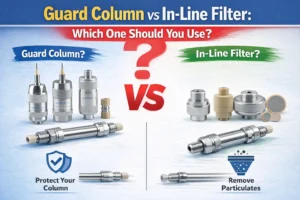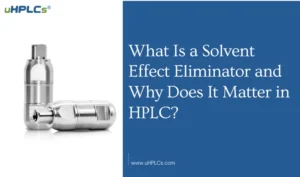High-Performance Liquid Chromatography (HPLC) is a powerful analytical technique employed in laboratories worldwide. This method separates, identifies, and quantifies each component in a mixture, contributing significantly to diverse fields such as pharmaceuticals, environmental monitoring, and food and beverage industries. The heart of the HPLC system is the column, often packed with tiny silica particles (stationary phase), where the actual separation of compounds occurs.
However, like any intricate machinery, an HPLC column requires routine maintenance to ensure it functions optimally, delivering reliable and reproducible results. One of the most vital aspects of this maintenance is cleaning, a process that, while simple, has profound implications on the column’s longevity and the overall effectiveness of the HPLC system.
In this article, we will comprehensively discuss the importance of maintaining an HPLC column, the signs indicating a need for cleaning, and a detailed step-by-step guide on how to effectively clean an HPLC column. We’ll explore techniques such as flushing the column, reverse flushing, and using organic solvents to maximize the cleanliness and lifespan of your HPLC columns. We’ll also delve into appropriate post-cleaning practices, including the conditioning and storage of the column.
So, whether you’re a seasoned HPLC operator or a novice to the field, join us as we delve into the intricacies of washing an HPLC column to ensure the longevity and optimal performance of your HPLC system. Let’s get started!
Tip 1: Understanding the Importance of Cleaning an HPLC Column
The importance of cleaning an HPLC column cannot be overstated. The column, as mentioned earlier, is the core of the HPLC system, where the actual separation of components in the mixture occurs. Therefore, maintaining its optimal functioning is crucial for obtaining reliable results. However, over time and repeated use, impurities can accumulate within the column, leading to a decline in performance and, eventually, the need for replacement if not addressed promptly.
Here are several reasons why cleaning an HPLC column is essential:
Prevention of Column Clogging: Residual impurities, particulates, or precipitated salts can cause column clogging, leading to an increase in backpressure and potentially damaging the column and the system. Regular cleaning can help mitigate this risk.
Maintaining Performance: The build-up of impurities can affect the column’s selectivity and efficiency, leading to poor resolution, tailing peaks, or variation in retention time. Cleaning helps maintain the column’s performance by removing these impurities.
Prolonging Column Lifespan: Routine cleaning extends the column’s lifespan, reducing the need for frequent replacements and saving costs in the long run.
Ensuring Reproducible Results: Impurities can lead to inconsistent results, affecting the reproducibility of the analysis. Regular cleaning helps ensure the consistency and reliability of the results.
Tip 2: Identifying When an HPLC Column Needs Cleaning
Recognizing the signs that an HPLC column needs cleaning is just as critical as the cleaning process itself. Monitoring the performance of your column regularly can help identify potential issues before they lead to significant problems. Here are a few telltale signs:
Increased Backpressure: A significant increase in backpressure often indicates that impurities or particulates are blocking the column.
Changes in Retention Time: If you notice a considerable shift in the retention time of your analytes, it might suggest that impurities are affecting the column’s chemistry.
Peak Tailing or Broadening: If peak shapes start to deteriorate, with increased tailing or broadening, it could be a sign that the column needs cleaning.
Loss of Column Efficiency: A reduction in the number of theoretical plates or an increase in the height equivalent to a theoretical plate (HETP) indicates a loss of column efficiency, often due to impurity build-up.
Poor Reproducibility: If the same analysis yields different results, it’s often a clear indicator that the column performance is inconsistent, possibly due to impurity interference.
Understanding these signs can help in timely intervention, maximizing the column’s performance and lifespan. In the next sections, we will discuss how to effectively clean an HPLC column when these signs start to show.
Tip 3: Preparing for the Cleaning Process
Before starting the cleaning process, you need to consider several factors to ensure that you can effectively remove impurities without damaging the HPLC column:
Identify the Nature of Impurities: If possible, identify the type of impurities that have accumulated on your column. This information will help you select the most appropriate cleaning solvent. For instance, if the impurities are polar, you would need a polar solvent for effective removal.
Column Material: The material of your column, such as silica, hybrid silica, or polymeric, can influence the type of cleaning solvent you can use. Some materials may be incompatible with certain solvents and can get damaged.
Column Temperature: Some cleaning procedures may require elevated temperatures. Ensure that your column can withstand these temperatures before proceeding.
Backpressure: Always monitor the backpressure during the cleaning process. If the pressure exceeds the column’s limit, stop the process immediately to prevent any damage.
Once you’ve considered these factors, you can proceed to the actual cleaning process.
Tip 4: The Process of Cleaning an HPLC Column
After the cleaning process, conditioning an HPLC column is an integral part of preparing it for the next set of runs. Conditioning helps equilibrate the column with the mobile phase and stabilize the chromatographic system. Here’s a general overview of the conditioning process:
Re-attach the column: Once the column has been properly cleaned and rinsed, it’s time to reconnect it to the system in the correct flow direction. Ensure the connections are secure, but avoid overtightening.
Equilibrate with mobile phase: Start the pump and introduce your mobile phase into the column at a low flow rate, about 0.2 mL/min. Monitor the system pressure and make sure it doesn’t exceed the maximum pressure limit for the column.
Gradually increase the flow rate: After some time, gradually increase the flow rate to the standard flow rate you usually operate with.
Monitor the system baseline: You should monitor the system baseline during conditioning. The baseline should stabilize and any drifts should be minimal. This typically indicates that the column is well-equilibrated.
Run blank samples: After the baseline is stable, you might want to run a few blank samples to further ensure the system is ready for analysis. This also helps confirm that any contaminants from the cleaning process have been fully flushed out.
Run test sample: If the blank samples provide good results, you can run a test sample. The retention times and peak shapes should be comparable to what you normally observe.
It’s important to note that the conditioning process can vary depending on the specific type of column and the analysis to be performed. Always refer to the manufacturer’s instructions for specifics on conditioning your particular column. This process ensures that your column is ready to provide reliable, consistent results once again.
Tip 5: Advanced Cleaning Techniques
When basic column cleaning isn’t enough, or when your column suffers from particularly stubborn contamination, you might need to employ more advanced cleaning techniques. These are a few examples:
Reverse Flushing: Reverse flushing involves running the solvent through the column in the opposite direction to the normal flow. This can be a useful method for dislodging and removing particles that have become trapped in the inlet frit of the column. However, this technique should be used with caution and is not suitable for all types of columns. Always consult the column’s manual or manufacturer’s recommendations before attempting a reverse flush.
High pH Cleaning: Some impurities, particularly proteins and other biological molecules, may bind strongly to the column and be difficult to remove with neutral solvents. In these cases, a high pH wash can be effective. However, this method should only be used on columns designed to withstand high pH conditions.
High Temperature Cleaning: Similarly, some impurities might be more effectively removed at higher temperatures. Before attempting this, it’s essential to ensure that your column is designed to withstand the increased temperature.
Tip 6: Evaluating the Success of Column Cleaning
After the cleaning process, it’s crucial to evaluate whether the procedure was successful in removing the impurities. There are a few ways you can do this:
Monitor Backpressure: As mentioned earlier, an increase in backpressure is often a sign of column contamination. If the backpressure returns to normal levels after cleaning, this is a good sign that the impurities have been removed.
Chromatographic Tests: Run a standard sample through the column and compare the results to the baseline data you collected when the column was new. If the column performance has returned to baseline levels, the cleaning was likely successful.
Visual Inspection: In some cases, you might be able to visually inspect the column for signs of impurities. This is usually easier with larger columns.
Tip 7: Proper Storage After Column Cleaning
Proper storage after column cleaning is crucial to maintaining the column’s performance and extending its life. Here are some general tips for storing your HPLC column:
Use an Appropriate Storage Solvent: The storage solvent should be compatible with the column material and should help to preserve its chromatographic properties. Many manufacturers recommend a mixture of water and organic solvent.
Seal the Column Ends: After filling the column with the storage solvent, seal the ends to prevent evaporation and entry of air.
Store at Room Temperature: Most columns should be stored at room temperature. Extreme temperatures can damage the column material and impact its performance.
Vertical Storage: If possible, store the column in a vertical position to prevent settling of the packing material.
Remember that these are general guidelines, and specific storage recommendations can vary based on the column type and manufacturer. Always follow the manufacturer’s instructions for best results.
Tip 8: Prevention - The Best Cure
Even though we have focused primarily on how to clean your HPLC column after contamination has occurred, it’s worth noting that preventing contamination in the first place is the best way to maintain column performance and longevity. Here are some preventative measures you should consider:
Regular Maintenance: Regular maintenance of your HPLC system, such as checking and replacing seals and filters, can help prevent contamination of your column.
Sample Preparation: Ensuring your sample is clean and properly prepared before injection can significantly reduce the risk of column contamination. This includes processes like filtration, centrifugation, or solid-phase extraction.
Use of Guard Columns: Guard columns, small columns connected in front of the analytical column, can protect your main column from contamination by trapping impurities before they reach the main column.
Appropriate Mobile Phase: Using a mobile phase that’s appropriately filtered and degassed can also prevent column contamination.
Remember, while cleaning is an important part of maintaining your HPLC column, it’s even better to avoid contamination in the first place.
Tip 9: When to Replace Your HPLC Column
Despite your best cleaning efforts, there will come a time when your HPLC column needs to be replaced. Here are some signs that it might be time for a new column:
Repeated Increases in Backpressure: If backpressure continues to increase even after cleaning, this might indicate that the column is irreversibly blocked or the packing material has deteriorated.
Decreased Column Efficiency: A decline in the number of theoretical plates or an increase in the height equivalent to a theoretical plate (HETP) might indicate that the column efficiency has decreased.
Change in Retention Time: If the retention times of your analytes are shifting and this cannot be corrected by conditioning or cleaning the column, it might be time for a replacement.
Poor Peak Shape: If peak tailing, fronting, or splitting occurs and cannot be corrected by cleaning or conditioning the column, this is a sign of a column issue.
If you’re experiencing these issues and the column does not respond to cleaning, it might be time to consider replacing the column. But remember, proper care, maintenance, and cleaning can help prolong the life of your HPLC column.
Conclusion: The Impact of Regular HPLC Column Cleaning on Lab Efficiency
The upkeep and regular cleaning of HPLC columns are not only essential for maintaining the integrity and longevity of the equipment, but it is also crucial for the efficiency and productivity of the lab.
Improved Data Quality: Regular cleaning of an HPLC column reduces the build-up of contaminants and ensures that the separation process is efficient and precise. This results in the production of accurate and reliable data which can impact the validity of the entire research project.
Increased Column Lifespan: Routine cleaning can significantly extend the lifespan of an HPLC column. A column that is well-maintained and cleaned regularly can consistently produce high-quality results over a longer period of time, reducing the frequency and costs associated with replacements.
Efficient Use of Resources: Time is a valuable resource in any lab. Cleaning and maintaining the HPLC column can reduce the occurrence of issues that might halt operations, such as pressure build-ups or degraded peak shapes. By avoiding these issues, labs can operate more smoothly and efficiently.
Cost-Effective: While the cleaning process involves some use of solvents and time, it is typically far more cost-effective than having to replace damaged columns frequently. It’s a preventative measure that saves on long-term expenses.
In conclusion, the regular cleaning of HPLC columns is an investment that provides valuable returns in terms of data quality, operational efficiency, and cost savings. It’s a critical aspect of lab operations that should not be overlooked. By adopting a proactive approach to column maintenance, labs can ensure that their HPLC systems continue to provide accurate, reliable results well into the future.
By now, you’ve gleaned the significance of maintaining your HPLC columns in prime condition. You’ve seen how proper cleaning procedures can greatly enhance lab efficiency and ensure the reliability of your results. But you may still have questions, and that’s perfectly fine. We’re here for you.
If you’re wondering how to tackle a specific issue with your HPLC system, or if you’re curious about the products we offer, we encourage you to reach out to us. You’re never alone in your quest for lab excellence — we’re here to guide and assist you every step of the way.
So, why wait? Drop us a line at sales@uhplcs.com, and let’s start a conversation about how we can support you and your lab. Remember, at uHPLCs, your success is our mission. Reach out to us today and let us help you take your lab performance to the next level.



